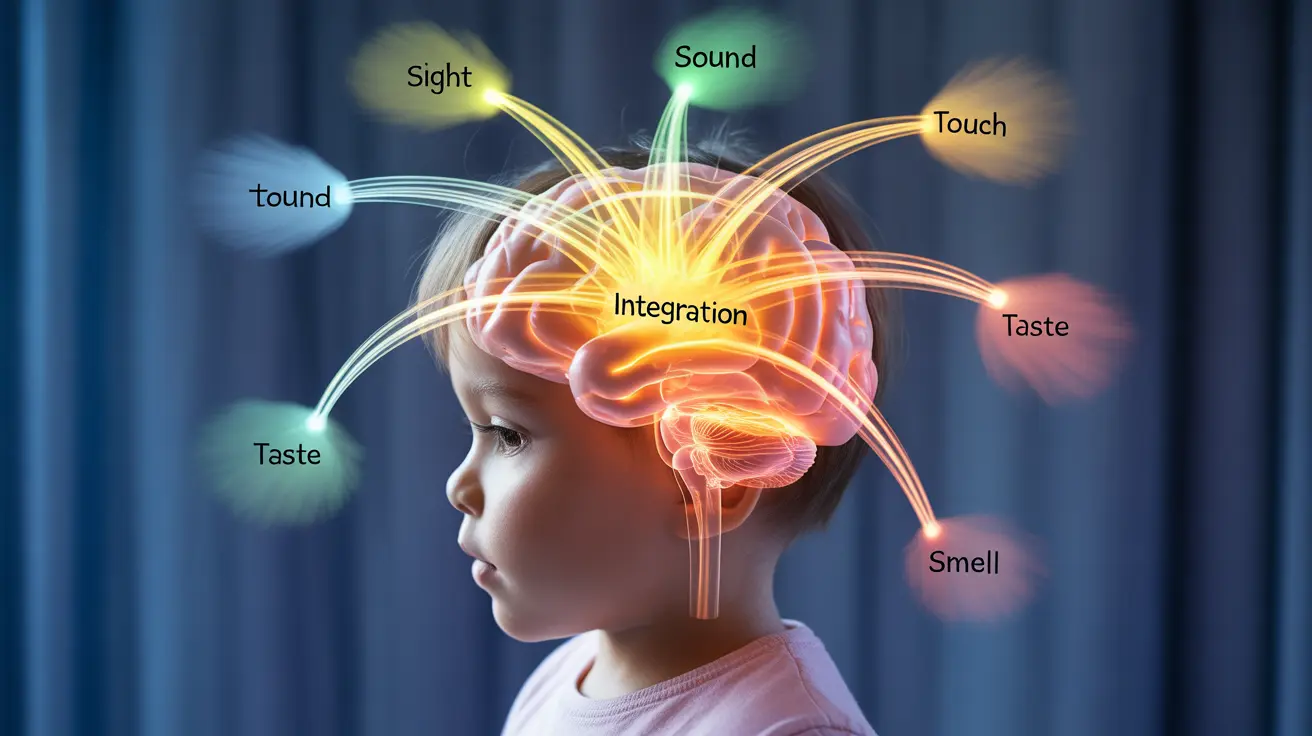Sensory issues in children can significantly impact their daily lives, affecting how they interact with the world around them and process various sensory inputs. These challenges can manifest in different ways, from heightened sensitivity to certain textures or sounds to seeming unresponsive to sensory stimuli that others would typically notice. Understanding these issues is crucial for parents and caregivers to provide appropriate support and intervention.
Whether your child shows signs of sensory processing difficulties or you're seeking to learn more about this common childhood challenge, this guide will help you understand the complexities of sensory issues and provide practical strategies for support.
What Are Sensory Issues?
Sensory issues, also known as sensory processing difficulties, occur when the brain has trouble receiving and responding to information that comes in through the senses. This includes not only the five basic senses (sight, sound, touch, taste, and smell) but also two lesser-known sensory systems: proprioception (body awareness) and vestibular sense (balance and spatial orientation).
Children with sensory issues may experience challenges in:
- Processing multiple sensory inputs simultaneously
- Filtering out unnecessary sensory information
- Responding appropriately to sensory stimuli
- Maintaining attention and focus in sensory-rich environments
- Coordinating movements and maintaining balance
Types of Sensory Processing Challenges
Hypersensitivity (Over-Responsiveness)
Some children experience heightened sensitivity to sensory input, leading to strong reactions to:
- Loud or unexpected sounds
- Bright lights or specific visual patterns
- Certain food textures or temperatures
- Light touch or specific fabric textures
- Strong smells or particular odors
Hyposensitivity (Under-Responsiveness)
Other children may show reduced sensitivity to sensory input, which can manifest as:
- Seeking intense sensory experiences
- Having a high pain threshold
- Not noticing temperature changes
- Appearing unresponsive to sounds
- Craving deep pressure or movement
Impact on Daily Life and Development
Sensory processing challenges can affect various aspects of a child's life, including:
- Academic performance and ability to focus in class
- Social interactions and relationships with peers
- Participation in physical activities and sports
- Self-care routines and daily living skills
- Emotional regulation and behavior management
When to Seek Professional Help
Parents should consider consulting with healthcare professionals if their child:
- Shows extreme reactions to ordinary sensory experiences
- Struggles significantly with daily routines
- Experiences developmental delays
- Has difficulty participating in age-appropriate activities
- Demonstrates persistent behavioral challenges related to sensory input
Support Strategies and Interventions
Several effective approaches can help children with sensory issues:
- Occupational therapy with sensory integration approach
- Creating sensory-friendly environments at home and school
- Implementing regular sensory breaks and activities
- Using sensory tools and adaptive equipment
- Developing consistent daily routines
Frequently Asked Questions
What are sensory issues and how do they affect children's behavior and daily activities?
Sensory issues affect how children process and respond to sensory information from their environment. This can impact behavior through increased anxiety, meltdowns, avoidance of certain activities, or seeking intense sensory experiences, ultimately affecting daily routines, learning, and social interactions.
What are the common signs of sensory hypersensitivity and hyposensitivity in children?
Hypersensitive children may be easily overwhelmed by loud noises, bright lights, or certain textures, while hyposensitive children might seek out intense sensory experiences, have a high pain threshold, or appear unresponsive to typical sensory inputs.
How can sensory processing disorder impact a child's ability to focus and interact socially?
Sensory processing challenges can make it difficult for children to concentrate in stimulating environments and may affect their ability to engage appropriately in social situations, potentially leading to withdrawal or behavioral issues.
When should parents seek professional help for sensory issues in their child?
Parents should seek professional help when sensory issues significantly impact their child's daily functioning, development, or ability to participate in age-appropriate activities, or when behavioral challenges persist despite home interventions.
What are effective strategies or treatments to support children with sensory processing difficulties?
Effective strategies include occupational therapy, creating structured sensory-friendly environments, implementing sensory diet activities, using adaptive tools, and maintaining consistent routines. Treatment should be individualized to each child's specific needs and challenges.




